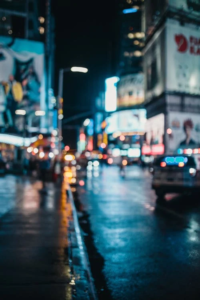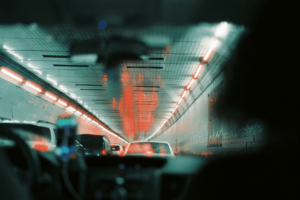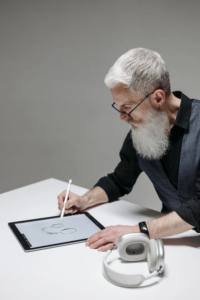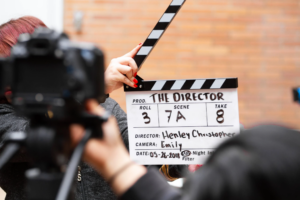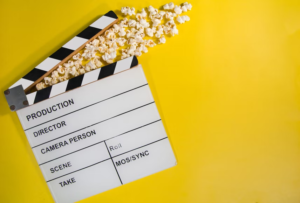The evolution of the camera is a fascinating journey that spans over two centuries. It all began in 1816, when Frenchman Joseph Nicéphore Niépce invented the first photographic camera, capturing rudimentary images on a piece of paper coated with silver chloride. From these humble beginnings, the camera has undergone dramatic transformations, from the invention of daguerreotypes and film photography to the rise of digital cameras, smartphones, and AI photography. Today, photography stands at the frontier of artificial intelligence, with AI-powered tools like Dreamwave being able to create entirely new, high quality photos from scratch.

Example of Dreamwave’s AI headshot generator creating a professionally taken photograph from an uploaded selfie. Photography has come a long way since 1812.
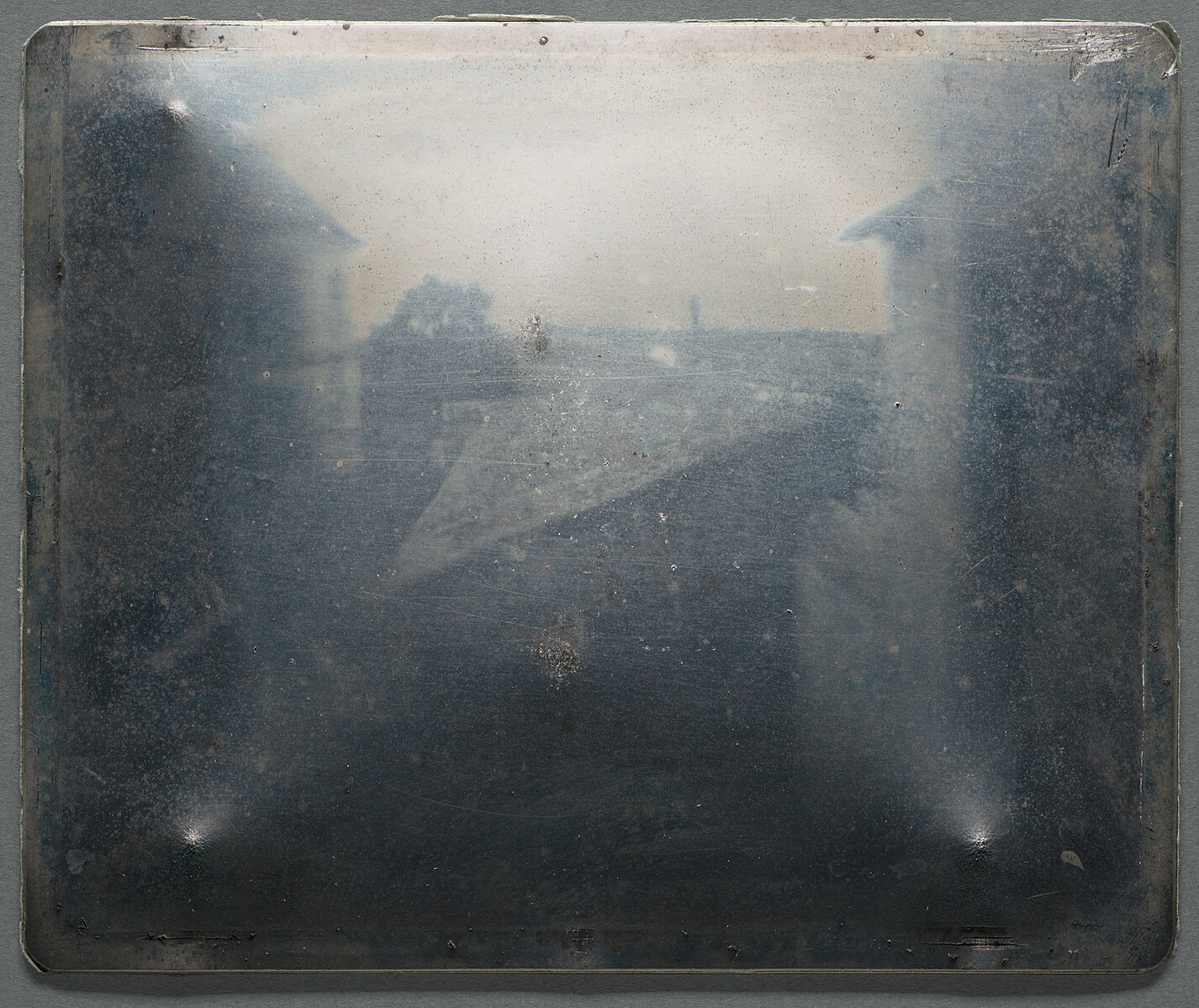
View from the Window at Le Gras (1826), the oldest surviving photograph in history

Even though more than 80% of Americans already own smartphones, it’s easy to overlook that millions of us have a stunningly elevated camera or two in our pockets. Cameras are so quick and easy to use that anybody can take a photo, edit it, and share it with the rest of the world in minutes. Technology has become so pervasive that many people can’t fathom their lives without photography in the twenty-first century.
First, let us understand what a camera is and when it all started!
What Is a Camera?
A camera is a device that takes and records visual input. It has a lens, a shutter, and a sensor. When you snap a photo with a film camera, the camera lens temporarily exposes the film strip to the light that passes through the lens. This exposure creates a latent picture by burning an impression into the image. When a latent print is caught, it can be developed into a negative, which you can then put onto light-sensitive photo paper to generate a photograph.

Photons of light pass through the optic and onto a digital optical device in digital photography. These sensors are made up of millions of photodetectors to form a photographic image.
The Origin of the Camera’s Invention
It’s fascinating to consider the evolution of the camera from its inception to its current state. Many people are involved in the history of the modern camera. Some of the individuals spent a decade working to develop a camera. The inventors worked hard to create a better the camera than before. In his work titled “Book of Optics,” Iraqi scientist and writer Ibn described a mechanism that resembled a camera in many ways, signaling the start of the thousand-mile journey involved in the design of the modern camera. In reality, camera quality continues to improve daily.
When was the first camera invented?
Camera obscura, meaning “darkroom” or “dark chamber” in Latin, was the first camera ever created. It wasn’t a camera as we know it now, but relatively little gloomy rooms with light entering only through a small hole. As a result, the adjacent wall was cast with an inverted picture of the outside scene.
This approach was used to see solar eclipses without harming one’s eyes and, later, drawing assistance.
Who invented the first camera?
Although it is unclear who originated the camera obscura, the oldest known written recordings of this idea are by Han Chinese scholar Mozi (c. 470 to c. 391 BC).
In the fourth century, Aristotle observed that sunlight traveling through spaces between leaves projects a picture of an overshadowed sun on the ground. The Greek architect Anthemius of Tralles, who utilized a form of camera obscura in his experiments in the 6th century, was aware of this occurrence.
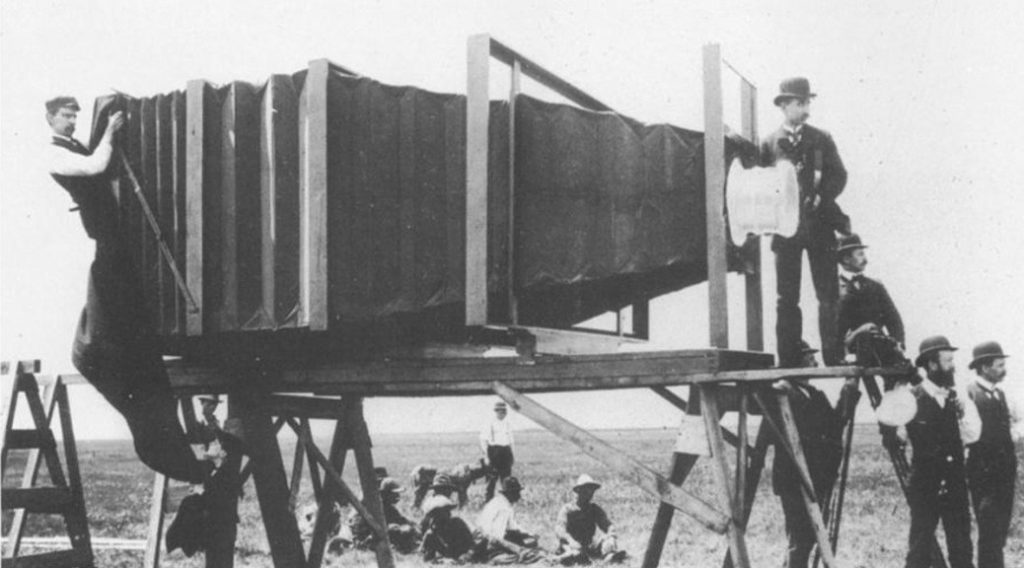
Al-Kindi, a brilliant Arab scholar, mathematician, healer, and musician, worked with light and a pinhole in the ninth century.
In the 11th century, an Arab physicist named Ibn al-Haytham (Alhazen) published optics books that featured light tests through a tiny hole in a darkened chamber (aka camera obscura). Hence, many regard him to be a legitimate inventor.
Leonardo da Vinci even wrote about it, writing the first clear explanation of the camera obscura in his Codex Atlanticus. He also sketched roughly 270 illustrations of camera obscura systems in his art books over the years and linked them to the human eye.
A Short History of Camera
The journey from the first cameras to modern global DSLR cameras has spanned centuries:
The Earliest Cameras
The camera obscura is thought to be the first camera in history. Conceptual descriptions of the camera obscura can be traced in Chinese manuscripts dating back to 400 B.C. and in Aristotle’s works around 330 B.C. Ibn Al-Haytham, an Arab scholar, presented the idea of a camera obscura around 1000 A.D. A camera obscura does not take images; instead, it directs light through a lens (technically a tiny hole) and projects it onto a screen. Pinhole cameras are similar to camera obscuras. These inventions foreshadow everything from still pictures to movie cameras and motion image projectors.
Cameras – a history: Earliest plate and film cameras to 1930
Handflex Reflex Camera
Johann Zahn, a German author, proposed a design for what is now known as a handheld reflex camera in 1685. However, no inventor physically realized the camera until 1816, when Joseph Nicéphore Niépce constructed a prototype.
The Photographic Camera
While historians generally accept that the first photographic camera was developed in 1816 by Frenchman Joseph Nicéphore Niépce, the camera’s origin relied on centuries of contributions. Niépce created photographic images on silver chloride-lined paper, and the oldest extant photograph is one he made around 1826. The original shot is still on exhibit at the University of Texas at Austin.
Daguerreotypes
In 1829, Louis Daguerre invented a more efficient camera device. Daguerreotypes were images captured by Daguerre’s camera, and his approach defined cameras in the mid-nineteenth century. Daguerreotypes are created by covering a copper plate with silver, sensitizing it with iodine, then exposing it to hot mercury. Henry Fox Talbot’s calotype, a daguerreotype variant, was also popular.
How was it made? The Daguerreotype | V&A
The Mirror Camera
Daguerre’s camera technology had a flaw where the pictures vanished quickly. This was corrected by American inventor Alexander S. Wolcott, who invented the mirror camera. Instead of a negative image with reversed colors, this camera created a positive impression.
Instantaneous Exposures
In 1871, Richard Leach Maddox devised a gelatin dry plate that produced brief exposures, serving as a forerunner to the Polaroid cameras of the twentieth century.
Kodak
It wasn’t until American George Eastman perfected the use of roll film cameras that analog photography reached its pinnacle. In 1888, Eastman began marketing a box camera he named Kodak, initially using paper film but swiftly transitioning to celluloid. A single Kodak camera arrived with 100 exposures and had to be developed at the Eastman Kodak plant in Rochester, New York. These early film cameras were eventually superseded by Kodaks’s Brownie cameras, a less expensive variation, in 1901.
35mm film camera
Between 1905 and 1913, camera manufacturers offered freestanding rolls of 35mm film that could be loaded into and withdrawn from the user’s camera. Oskar Barnack, a German scientist, and photographer is widely recognized for introducing 35mm film cameras, starting with the Leica, which he designed for the Leitz firm. However, Kodak would swiftly become the world’s leading supplier of photographic film for 35mm cameras, with other firms such as Fujifilm later providing stiff competition.
How to Shoot on 35mm Film Cameras
Twin-Reflex Camera
The creation of lens reflex cameras, which offered features such as camera lenses, pentaprism, variable shutter speeds, and removable lenses, marked a significant advancement in the camera. The first of these cameras were dual-lens reflex cameras (or TLRs for short), sold in the 1920s by the German company Franke & Heidecke. TLR cameras were quickly phased out to favor single-lens reflex cameras (or SLR).
Cameras – a history: Film cameras from 1930
Twin Lens Reflex (TLR) cameras
Digital SLR camera
The first DSLR camera was introduced in 1999, and after only a few years of scientific advancement, it had entirely supplanted single-lens reflex cameras. A digital single-lens reflex camera (DSLR or digital SLR) is a camera that produces high-quality images and is popular among both amateurs and professionals. A DSLR camera lets you see the actual appearance you’re shooting through the viewfinder, allowing you to visualize better and record your scenes.
Cameras – a history: Digital Cameras and Smartphone Cameras
Evolution & Decline of Digital Cameras 1971 – 2020
Mirrorless camera
Epson introduced the first mirrorless camera in 2004, which does not use a reflex mirror. Light flows directly through the lens to the digital sensor, which displays your image on the camera’s LCD screen, allowing you to alter adjustments and preview your image before shooting. While this was not initially considered an easily replaceable camera, changes and developments have cleared the path for additional mirrorless lenses, propelling it to the forefront of customizable photography.
First Camera to Produce a Photograph: Niépce
The camera obscura, a device described by Aristotle over 2,300 years ago and possibly used by great artists such as Vermeer, is the ancestor of the photographic camera. According to the Oxford English Dictionary, a camera must produce an image on film, paper, or another medium.
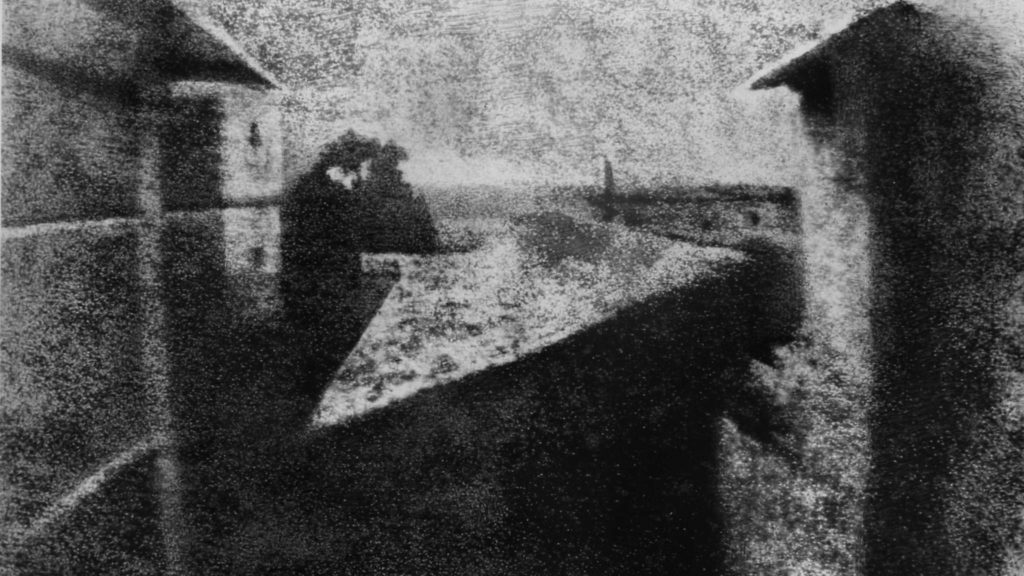
The camera obscura’s main disadvantage was that it simply produced light; it was impossible to sustain the image. That changed in 1826 or 1827 when Joseph Nicéphore Niépce adapted the camera obscura to generate a photographic plate.
How It Functioned
Niépce experimented with several plates using paper, varnish-coated parchment, and metal to create his camera’s first photograph. He covered the plates with a sort of asphalt and observed how they were impacted by sunshine, referring to his studies as “heliography” or “sun writing.” He tried several times to take a camera obscura, but the image faded fast. He eventually chose a pewter plate, put it into the base of the camera obscura, and generated an idea that has survived today.
The Final Result
Despite producing a permanent image, the image from Niépce’s camera was unclear. The picture captured a view from the window without fixing focus. As a result, there was difficulty in what the model was looking at, making it challenging to comprehend the clicked shot. Still, it’s a remarkable contribution by Niépce, who became the inventor of the first camera and paved the way for further achievements in developing the camera.
First Successful & Popular Camera: Daguerre
Unfortunately, Niépce’s camera did not sell well. He refused to reveal his method to create the photos, which missed clarity and depth.

Finally, in 1829, he formed a partnership with Louis-Jacques-Mandé Daguerre, and the two men worked together to perfect the process and commercialize it. Tragically, Niépce died in 1833 and could not witness the enormous economic success Daguerre achieved by adapting his original design.
How It Functioned
Daguerre invented the camera that could produce extraordinarily detailed pictures on a refined sheet of silver-plated copper sensitized with vaporized iodine utilizing the same fundamental concept of a box that let in light through a small hole. He inserted the plate into the camera’s rear and opened it to light for a few minutes. He then “fixed” or made permanent the image with sodium thiosulphate after developing it with mercury fumes.
The Final Result
Daguerre’s camera and method became commercially successful almost immediately. They were widely used because of their ability to produce images fast and in great detail. Even after he died in 1851, Daguerre became wealthy and recognized worldwide. Today, many daguerreotypes can still be found in family records, museums, and libraries.
First Retail Camera: Eastman
Various additional plate methods for producing photographs with cameras grew popular over time. Tintypes and glass plates were used, and photographers soon began to print on paper. On the other hand, photography was still reserved for experts or very serious amateur experimenters.

Image Source: National Museum of American History
Ordinary people couldn’t use cameras to capture crucial moments until George Eastman invented the Kodak No. 1 camera in 1889.
Kodak: How George Eastman revolutionized photography
How It Functioned
The Kodak No. 1 camera was a huge brown box with a folding key on top and a lens in front. It cost roughly $25 (more than $620 in today’s money) and came preloaded with 100 shots of the film. The consumer would shoot 100 images and then mail them back to Kodak to be restored and reloaded, a $10 process. The pictures that resulted were circular.
The Final Result
A stroll through any family photo album will show you how this invention transformed photography. It moved the camera out of the lab and into the home, resulting in photos that were true to life. Of course, the consumer camera was developed and refined over time, but the Kodak No. 1 enabled relaxed shooting conceivable.
First Digital Camera: Sasson

As metal and glass plates gave rise to film, camera technology evolved. Nonetheless, there has always been a direct tie between the lighting and the actual thing it acted on. The first digital camera was invented in 1975 by Eastman Kodak American engineer Steve Sasson.
Steve Sasson, Digital Camera Inventor
How It Functioned
Sasson built his prototype digital camera out of Motorola components, a few detectors, 16 nickel-cadmium batteries, a digital recorder, and a Kodak movie camera lens. The eight-pound behemoth produced black-and-white photographs at 0.01-megapixel resolution in 23 seconds. In addition, Sasson and other Kodak engineers created a unique screen to view them.
The Final Result
Although Kodak elected not to commercialize Sasson’s prototype, the digital camera was the future. In 2016, 24,190 digital still cameras were shipped to customers, according to the Camera and Imaging Products Association. This includes point-and-shoot cameras and DSLRs but excludes consumers’ numerous digital smartphone cameras.
When it comes to camera invention, there have been numerous significant “firsts,” ranging from a modest box that produced a fuzzy, dim image on a pewter plate to the digital camera the size of a toaster. Each advancement impacted the world of photographers forever, and it’s worth remembering them the next time you take an image.
Inventor Steve Sasson discusses the first digital camera
What Were Ancient Cameras Like?
The first cameras were enormous. The original camera was so large that it required many people to operate it. It was roughly the size of a room. There was enough space for a large group of individuals on the inside. The large cameras remained in use until the 1940s. Some of the cameras could capture photographs but could not preserve them.

Image Source: History Cooperative
As a result, the photographer was forced to trace the photographs after they were taken manually. Initially, the cameras generated blurry images, which eventually improved. The first camera could also capture black-and-white pictures. However, it wasn’t until the 1940s that color photography became widely used and sold.
Who Invented the First Cinematographic Camera?
A group of inventors was attempting to figure out how to capture images on film in the late 1800s. Many people claim to have invented the first movie camera, but no one knows for sure.

Many historians and scientists believe Thomas Edison invented the first movie camera because he obtained a patent on a device known as a kinetoscope in 1891 (the same year that “A Trip to the Moon” was produced). Others believe that Etienne-Jules Marey and Louis Le Prince were the original inventors.
Unfortunately, he died before he could savor his innovation and never got to see it in action. However, numerous patents were issued before he developed this specific device.
The Aftermath of the Film Camera’s Invention
The introduction of the cinema camera represents a watershed moment in the history of motion picture technology. Cinema cameras have altered the way films are made and constructed, altering everything from how performers perform to which sequences are captured.

Louis Le Prince, a French inventor, invented the movie camera in 1895. His work paved the ground for future innovations that profoundly transformed film history.
Videos
A Brief History Of Photography
Why mirrorless cameras are taking over
Final Thoughts
What began as a simple tool for capturing still photographs in motion has grown into a complete art form that influences popular culture. From the first camera obscura through the color film’s creation, the camera’s history is riddled with some remarkable innovations and ideas.



